Page 121 of 154

120CAR MAINTENANCE
– Do not check polarity through
sparking.
– Disconnect the electronic units if
you are electrically welding the car
body. Remove the units if tempera-
tures exceed 80°C (special operations
on the bodywork etc.).
IMPORTANTIf the sound system
or car alarm systems are not installed
correctly, they can interfere with the
working of the electronic control
units. ELECTRONIC
CONTROL UNITS
When the car is being used normally,
special measures are not necessary.
The following instructions must be
followed very carefully, however, if
you work on the electrical system or
in cases where emergency starting is
necessary:
– Never disconnect the battery from
the electrical system while the engine
is running.
– Disconnect the battery from the
electrical system if you are recharg-
ing it.
– Never perform emergency starts
with a battery charger. Always use an
auxiliary battery.
– Be particularly careful when con-
necting the battery to the electrical
system. Ensure the battery posts are
connected up to the right leads (the
polarity is correct) and check that the
connection has been made properly.
– Do not connect or disconnect the
terminals of the electronic units while
the ignition key is at MAR. Modifications or repairs
to the electrical system
carried out incorrectly
and without bearing the features
of the system in mind can cause
malfunctions with the risk of fire.
Furthermore, remember that high
intake electric devices (such as baby
bottle warmers, vacuum cleaners, cel-
lular phones, mini-fridges, etc.) pow-
ered when the engine is offcan
deploy the battery.
IMPORTANTIf you need to install
added systems to the vehicle, im-
proper wiring connections, in partic-
ular if they affect safety devices, are
dangerous.
BATTERY
DA
40A 24 mA
MAXIMUM
ADMITTED
STAND-BY INTAKE
These devices will, in fact, run off the
battery even when the key is not in-
serted (car parked) and can deploy
the battery.
The total intake of these systems
(factory and after-market) must be
less than 0.6 mA x Ah (of the battery)
as shown in the following table:
Page 122 of 154

121CAR MAINTENANCE
If the pressure is too low
the tyre overheats and
this can cause it serious
damage.case, comply with the laws in the
country where the car is being driven.
IMPORTANT
As far as possible avoid sharp brak-
ing and screech starts.
Be careful not to hit the kerb, pot-
holes or other obstacles hard. Driving
for long stretches over bumpy roads
can damage the tyres.
Periodically check that the tyres have
no cuts in the sidewalls, abnormal
swelling or irregular tyre wear. If any
of these occur, have the car seen to
at a Fiat Dealership.
Avoid overloading your car: this can
seriously damage wheels or tyres.
If you get a flat tyre, stop immedi-
ately and change it so as not to dam-
age the tyre, the wheel, the suspen-
sion and the steering.
Tyres age even if they are not used
very much. Cracking of the tread rub-
ber and the sidewalls are a sign of this
ageing. In any case, if the tyres have
been fitted for more than six years
they should be examined by an expert
Tyre pressure must be
correct to ensure good
road holding.Wrong pressure causes uneven
wear of the tyres fig. 8:
A - correct pressure: tyre wears
evenly;
B - under inflated tyre: shoulder
tread wear;
C - over inflated tyre: centre tread
wear.
Tyres must be replaced when the
tread wears down to 1.6 mm. In any
fig. 8
P4Q00086
WHEELS AND TYRES
TYRE PRESSURE
Check the pressure of each tyre, in-
cluding the spare, every two weeks
and before long journeys.
The pressure must be checked when
the tyre is rested and cold.
It is normal for the pressure to rise
when you are driving. If you have to
check or restore the pressure when
the tyres are warm, remember that
the pressure value must be 0.3 bar
above the specified value.
See
WHEELSin TECHNICAL SPECIFICA-
TIONSfor the correct tyre inflation
pressure.
Page 123 of 154

122CAR MAINTENANCE
RUBBER TUBING
Follow the SERVICE SCHEDULEto the
letter as concerns braking, power
steering and fuel line rubber tubing.
Ozone, high temperatures and long
absence of fluid in the system can in
fact cause the hardening and cracking
of the pipes with possible loss of fluid.
A careful check is therefore essential.
WINDSCREEN AND
REAR WINDOW
WIPERS
BLADES
Periodically clean the rubber part
with suitable products. We recom-
mendTUTELA PROFESSIONAL
SC35.
Change the blades if the rubber edge
is warped or worn out. You should in
any case change them approximately
once a year. who can judge whether they are still
fit for use. Remember to check the
spare tyre particularly carefully too.
If a replacement is necessary, always
use new tyres and avoid using ones
the origin of which you are not cer-
tain about.
The Fiat 600 fits tubeless tyres. Un-
der no circumstances use an inner
tube with these tyres.
If you replace a tyre it is a good idea
to change the inflation valve, too.
To ensure the front and rear tyres
all wear evenly, you are advised to
change the tyres over every 10-15
thousand kilometres keeping them on
the same side of the car so as not to
reverse the direction of rotation.
Do not change the tyres
over in criss-cross fashion
by moving a tyre from
the left hand side of the car to
the right and vice versa.
Travelling with worn
wiper blades is dangerous
because it reduces visibil-
ity in bad weather.
In winter if the temperature falls be-
low zero, make sure the blades are
not frozen to the windscreen. If nec-
essary, free them with a de-icing com-
pound.
Page 124 of 154
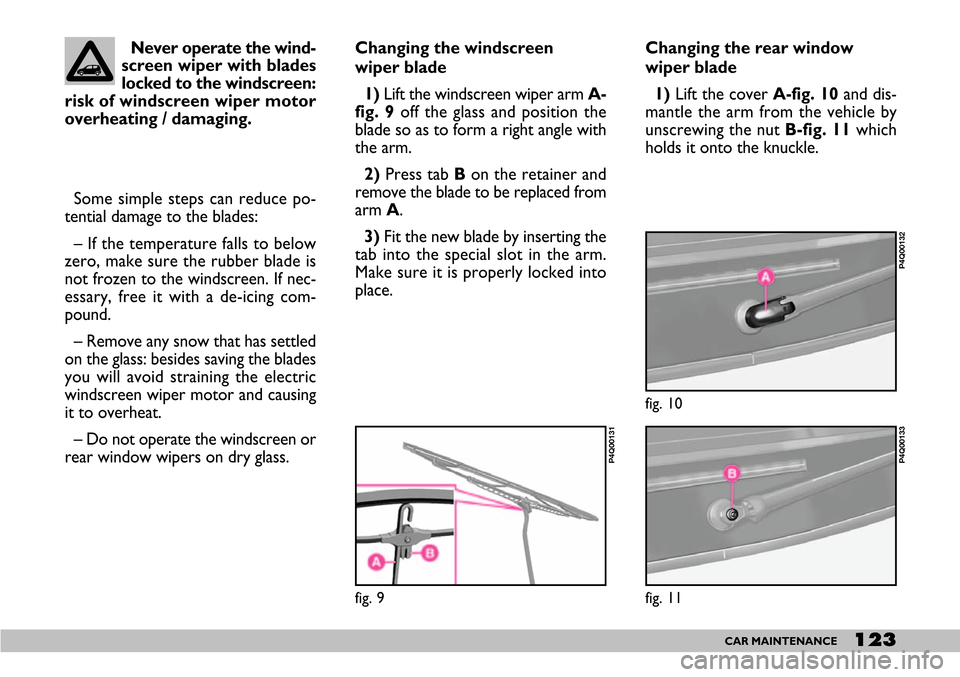
123CAR MAINTENANCE
Changing the windscreen
wiper blade
1) Lift the windscreen wiper arm A-
fig. 9off the glass and position the
blade so as to form a right angle with
the arm.
2) Press tab B on the retainer and
remove the blade to be replaced from
arm A.
3) Fit the new blade by inserting the
tab into the special slot in the arm.
Make sure it is properly locked into
place.Changing the rear window
wiper blade
1) Lift the coverA-fig. 10and dis-
mantle the arm from the vehicle by
unscrewing the nut B-fig. 11which
holds it onto the knuckle.
fig. 9
P4Q00131
fig. 10
P4Q00132
fig. 11
P4Q00133
Never operate the wind-
screen wiper with blades
locked to the windscreen:
risk of windscreen wiper motor
overheating / damaging.
Some simple steps can reduce po-
tential damage to the blades:
– If the temperature falls to below
zero, make sure the rubber blade is
not frozen to the windscreen. If nec-
essary, free it with a de-icing com-
pound.
– Remove any snow that has settled
on the glass: besides saving the blades
you will avoid straining the electric
windscreen wiper motor and causing
it to overheat.
– Do not operate the windscreen or
rear window wipers on dry glass.
Page 125 of 154

124CAR MAINTENANCE
The windscreen washer jets can be
directed by adjusting the inclination of
the nozzles. Direct the spray so that
it reaches the highest point reached
by the blades. BODYWORK
PROTECTING THE CAR
FROM ATMOSPHERIC
AGENTS
The main causes of rust are:
– atmospheric pollution;
– salt and humidity in the atmos-
phere (coastal or very hot and humid
areas);
– environmental conditions that are
specific to the season.
In addition, the abrasiveness of dust
in the atmosphere and sand carried by
the wind as well as mud and stones
kicked up by other cars must not be
underestimated.
For your Fiat 600, Fiat has used lead-
ing-edge technological solutions to ef-
fectively protect the body from rust.
These are the most important:
– painting systems and products that
make the car particularly resistant to
rust and scratching; 2) Position the new arm correctly
and fasten the nut B.
3) Replace the cover A.
NOZZLES fig. 12-13
If there is no jet of liquid, first make
sure that there is liquid in the reser-
voir: see
CHECKING FLUID LEVELSin this
chapter.
Then make sure that the holes in the
nozzles
are not clogged up. Use a pin for this
if necessary.
fig. 13
P4Q00127
fig. 12
P4Q00126
Page 126 of 154

125CAR MAINTENANCE
TIPS FOR KEEPING
THE BODYIN GOOD
CONDITIONS
Paintwork
The paintwork is not only to make
your car look attractive but also to
protect the steel.
If your car is scuffed or scratched
deeply you are therefore advised to
touch up the paintwork as necessary
to prevent rust from forming.
Only use genuine products when
touching up the paintwork (see the
TECHNICAL SPECIFICATIONSchapter.
Ordinary maintenance of the paint-
work means washing it. The frequency
you should do this depends on the
conditions and the environment the
car is driven in. For example, in areas
with a high level of air pollution, or on
roads sprinkled with road saltwash
the car more frequently.Detergents pollute wa-
ter. For this reason, the
car must be washed in an
area equipped for the collection
and purification of the liquids
used while washing.
To wash the car properly:
1) Remove the aerial from the roof
to avoid damaging it in an automatic
car wash.
2) Wash the body using a low pres-
sure jet of water.
3) Wipe a sponge with a slightly
soapy solution over the bodywork,
frequently rinsing the sponge.
4) Rinse well with water and dry
with a jet of air or a chamois leather.
When drying the car, be careful to
get at those parts which are not so
easily seen e.g. the door frames, bon-
net and around the headlights where
water can most readily collect.
– the use of zinc-plated (or pre-
treated) sheet steel which is highly re-
sistant to rust;
– the spraying of the underbody, en-
gine compartment, inside the wheel-
arches and other parts with wax-
based products with a high protective
capacity;
– spraying plastic-coating materials
to protect the most exposed points:
under the door, inside the wings, the
edges etc.;
– the use of “open” box sections to
prevent condensation and water from
building up and rusting the inside of
the parts.
BODY AND UNDERBODY
WARRANTY
Your Fiat 600 is covered by guaran-
tee against any original structural or
body part being holed by rust. Refer
to the “Warranty Booklet” for the
general conditions of this guarantee.
Page 127 of 154
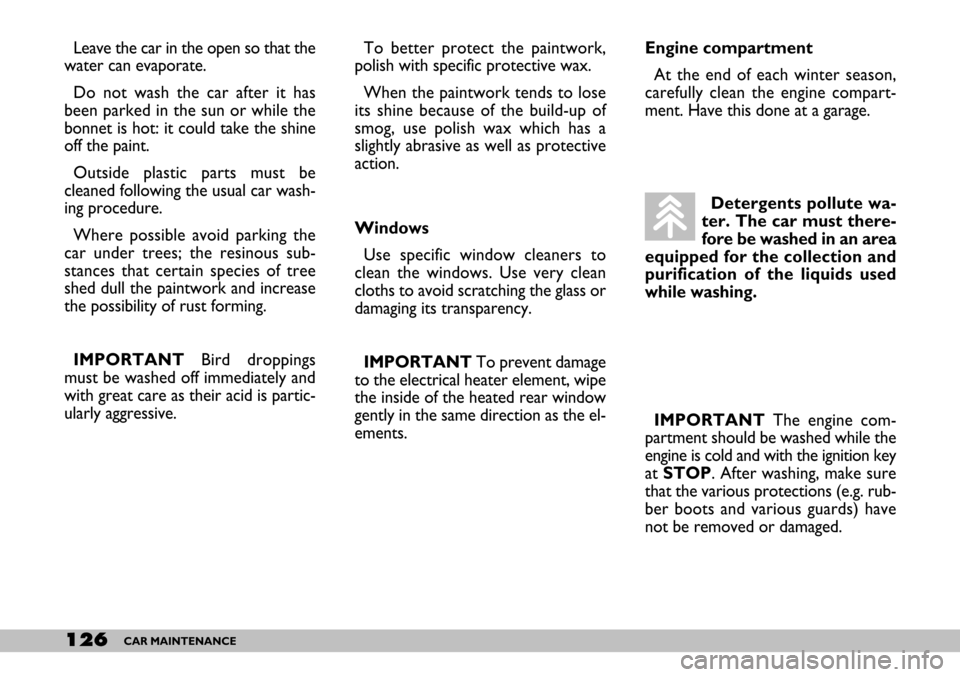
126CAR MAINTENANCE
Engine compartment
At the end of each winter season,
carefully clean the engine compart-
ment. Have this done at a garage. Leave the car in the open so that the
water can evaporate.
Do not wash the car after it has
been parked in the sun or while the
bonnet is hot: it could take the shine
off the paint.
Outside plastic parts must be
cleaned following the usual car wash-
ing procedure.
Where possible avoid parking the
car under trees; the resinous sub-
stances that certain species of tree
shed dull the paintwork and increase
the possibility of rust forming.
IMPORTANT Bird droppings
must be washed off immediately and
with great care as their acid is partic-
ularly aggressive.Detergents pollute wa-
ter. The car must there-
fore be washed in an area
equipped for the collection and
purification of the liquids used
while washing.
IMPORTANTThe engine com-
partment should be washed while the
engine is cold and with the ignition key
at STOP. After washing, make sure
that the various protections (e.g. rub-
ber boots and various guards) have
not be removed or damaged. To better protect the paintwork,
polish with specific protective wax.
When the paintwork tends to lose
its shine because of the build-up of
smog, use polish wax which has a
slightly abrasive as well as protective
action.
Windows
Use specific window cleaners to
clean the windows. Use very clean
cloths to avoid scratching the glass or
damaging its transparency.
IMPORTANT To prevent damage
to the electrical heater element, wipe
the inside of the heated rear window
gently in the same direction as the el-
ements.
Page 128 of 154
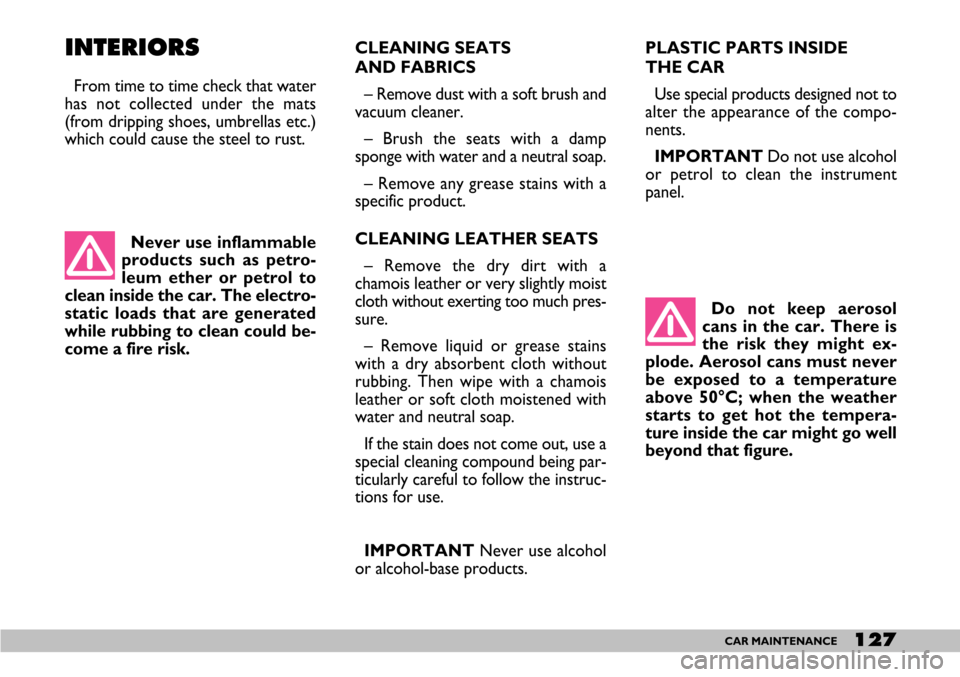
127CAR MAINTENANCE
CLEANING SEATS
AND FABRICS
– Remove dust with a soft brush and
vacuum cleaner.
– Brush the seats with a damp
sponge with water and a neutral soap.
– Remove any grease stains with a
specific product.
CLEANING LEATHER SEATS
– Remove the dry dirt with a
chamois leather or very slightly moist
cloth without exerting too much pres-
sure.
– Remove liquid or grease stains
with a dry absorbent cloth without
rubbing. Then wipe with a chamois
leather or soft cloth moistened with
water and neutral soap.
If the stain does not come out, use a
special cleaning compound being par-
ticularly careful to follow the instruc-
tions for use.
IMPORTANT Never use alcohol
or alcohol-base products.PLASTIC PARTS INSIDE
THE CAR
Use special products designed not to
alter the appearance of the compo-
nents.
IMPORTANT Do not use alcohol
or petrol to clean the instrument
panel.
Do not keep aerosol
cans in the car. There is
the risk they might ex-
plode. Aerosol cans must never
be exposed to a temperature
above 50°C; when the weather
starts to get hot the tempera-
ture inside the car might go well
beyond that figure.INTERIORS
From time to time check that water
has not collected under the mats
(from dripping shoes, umbrellas etc.)
which could cause the steel to rust.
Never use inflammable
products such as petro-
leum ether or petrol to
clean inside the car. The electro-
static loads that are generated
while rubbing to clean could be-
come a fire risk.
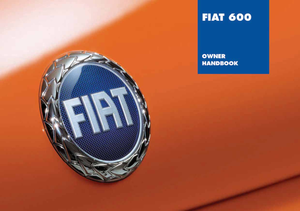 1
1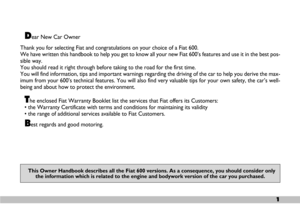 2
2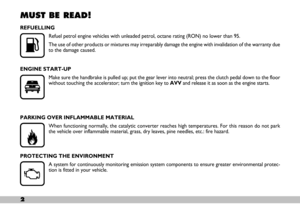 3
3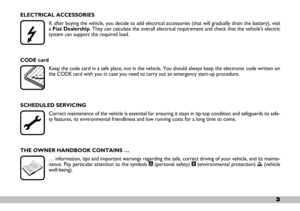 4
4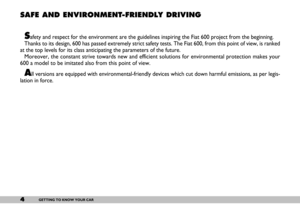 5
5 6
6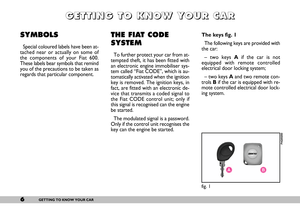 7
7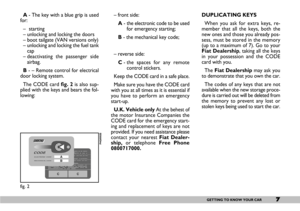 8
8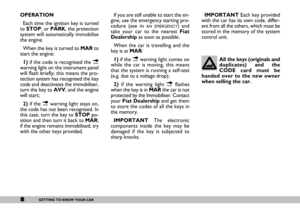 9
9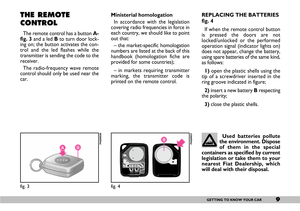 10
10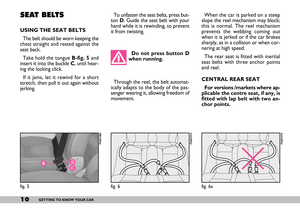 11
11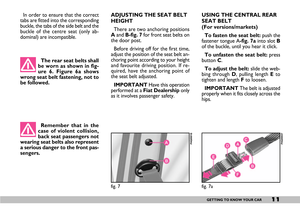 12
12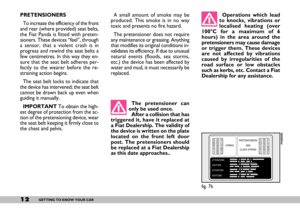 13
13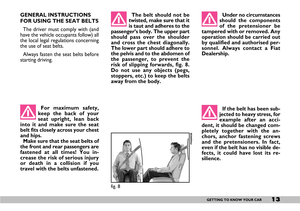 14
14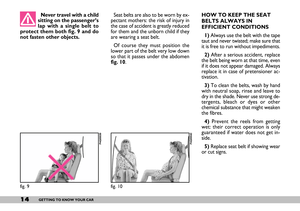 15
15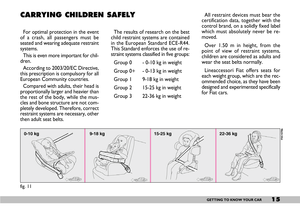 16
16 17
17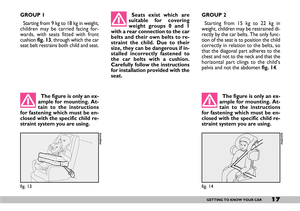 18
18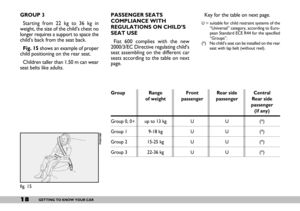 19
19 20
20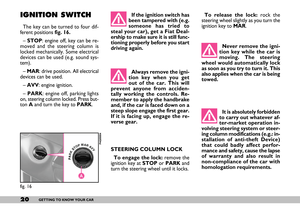 21
21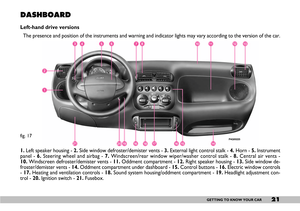 22
22 23
23 24
24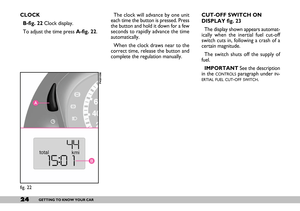 25
25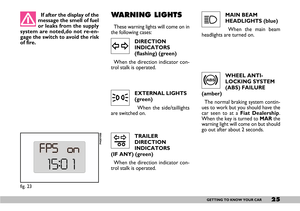 26
26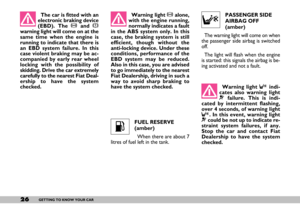 27
27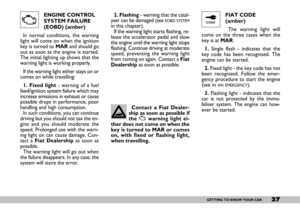 28
28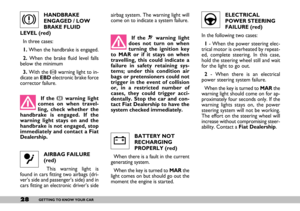 29
29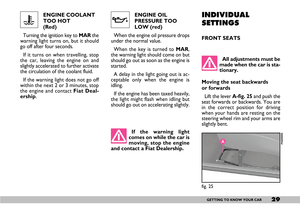 30
30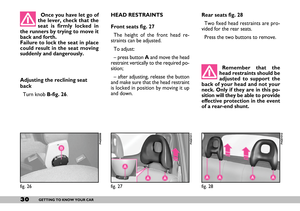 31
31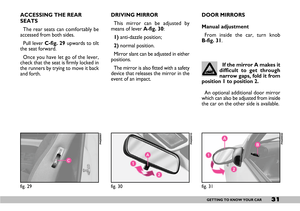 32
32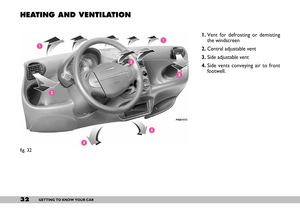 33
33 34
34 35
35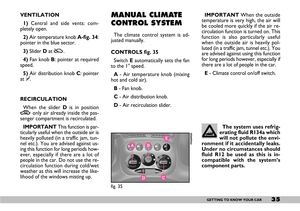 36
36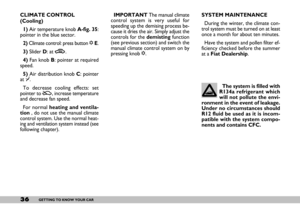 37
37 38
38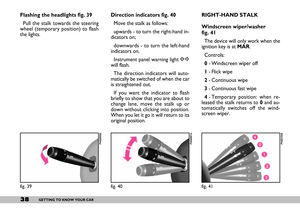 39
39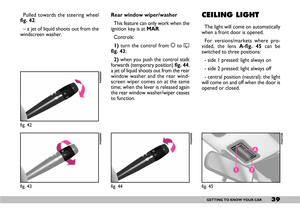 40
40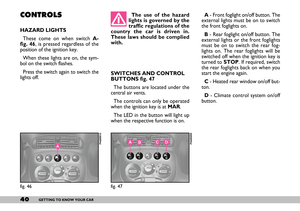 41
41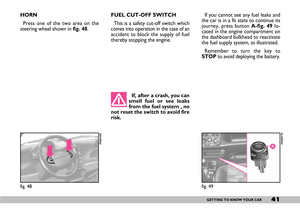 42
42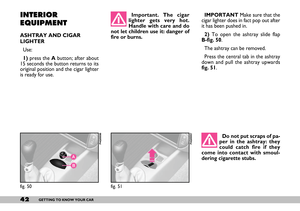 43
43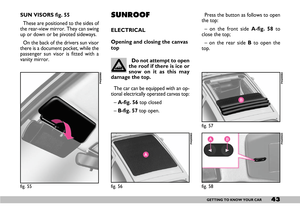 44
44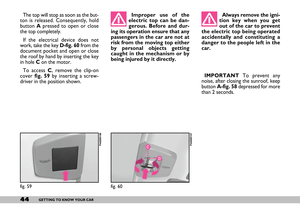 45
45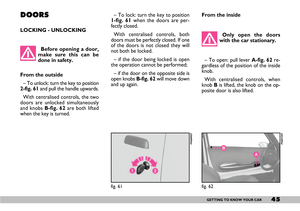 46
46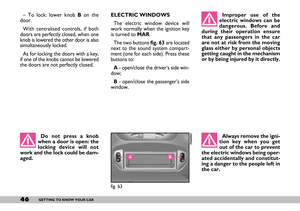 47
47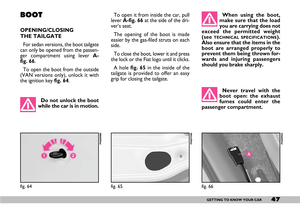 48
48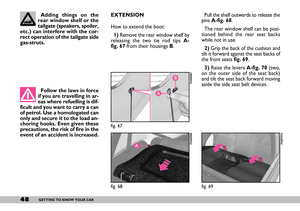 49
49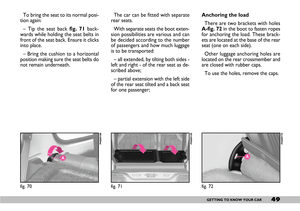 50
50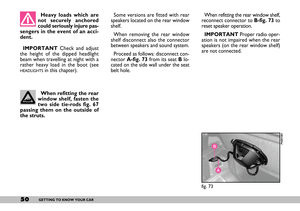 51
51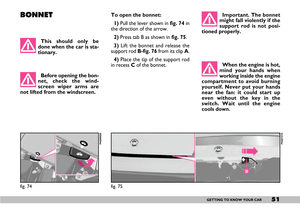 52
52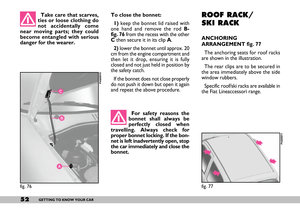 53
53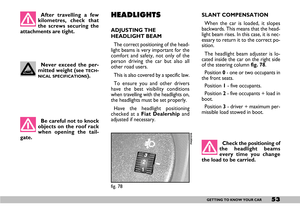 54
54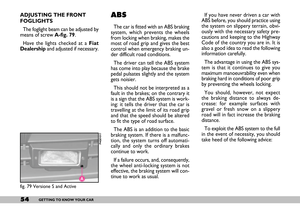 55
55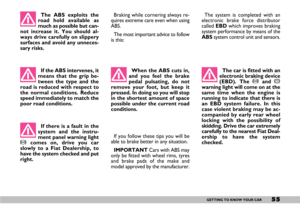 56
56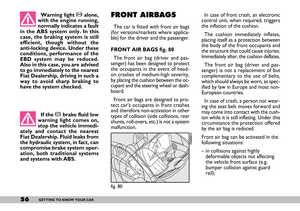 57
57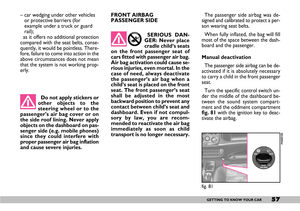 58
58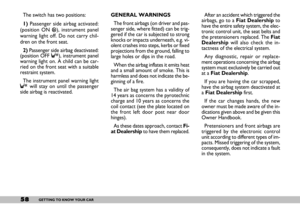 59
59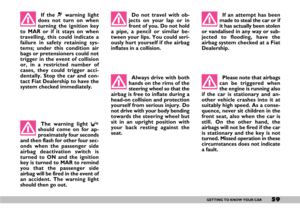 60
60 61
61 62
62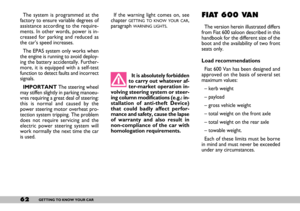 63
63 64
64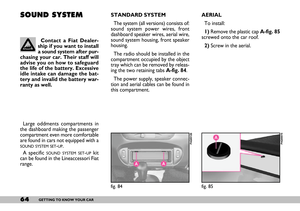 65
65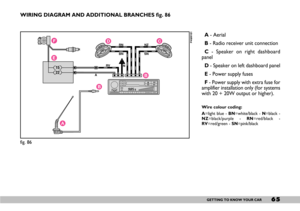 66
66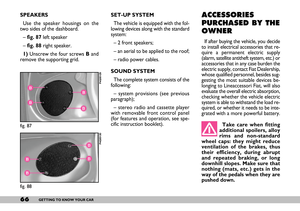 67
67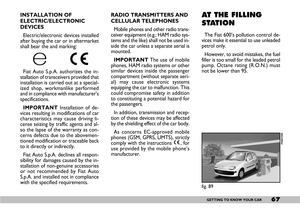 68
68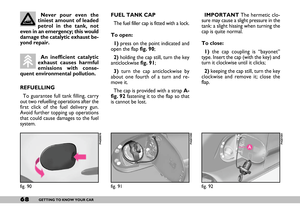 69
69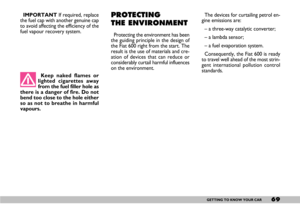 70
70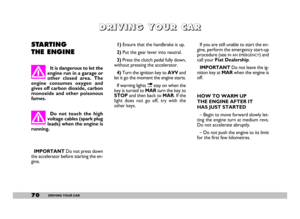 71
71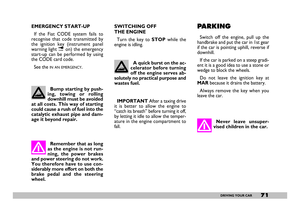 72
72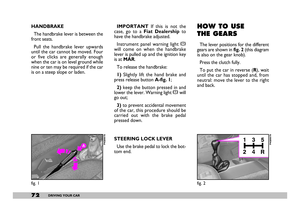 73
73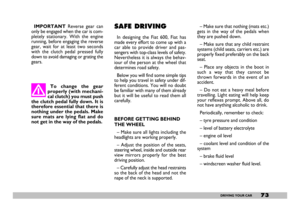 74
74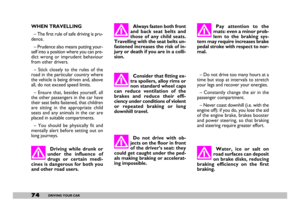 75
75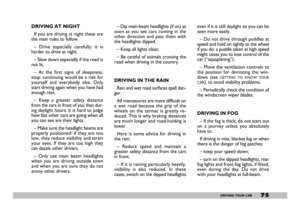 76
76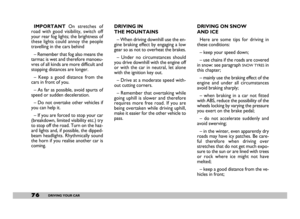 77
77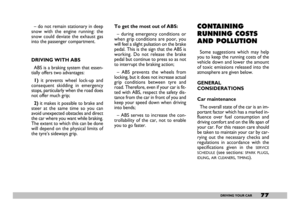 78
78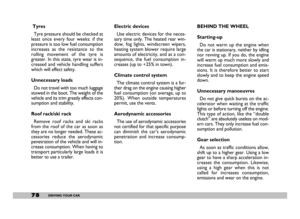 79
79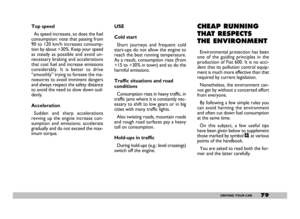 80
80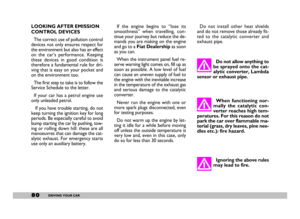 81
81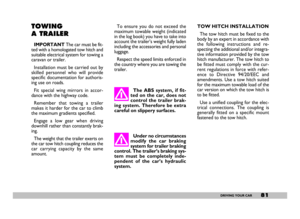 82
82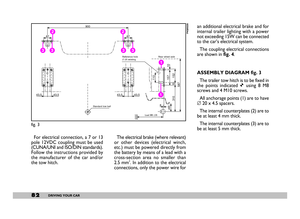 83
83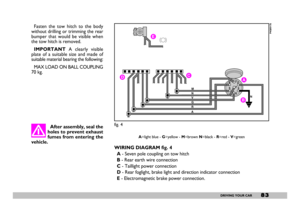 84
84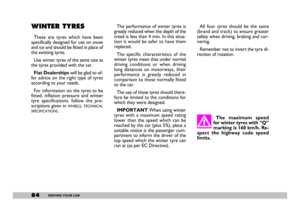 85
85 86
86 87
87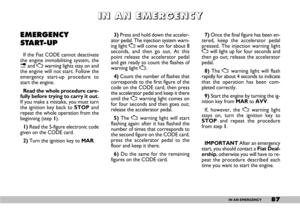 88
88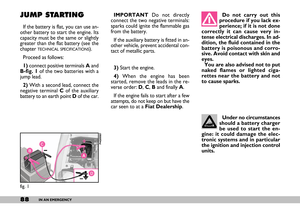 89
89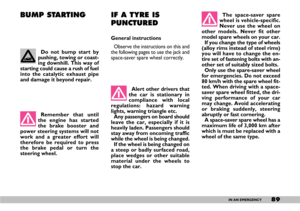 90
90 91
91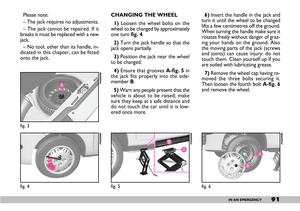 92
92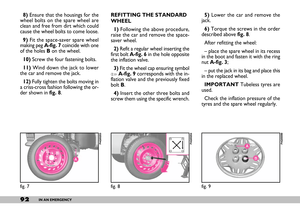 93
93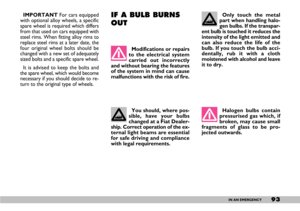 94
94 95
95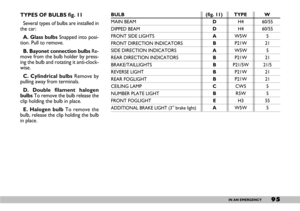 96
96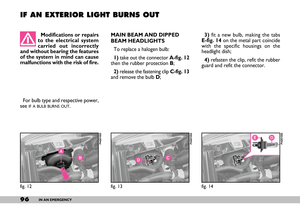 97
97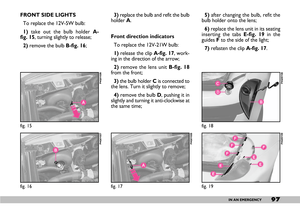 98
98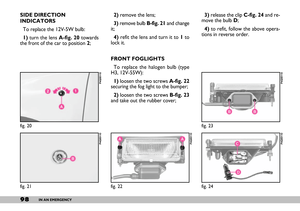 99
99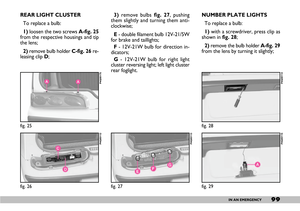 100
100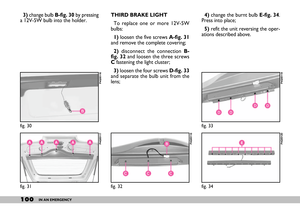 101
101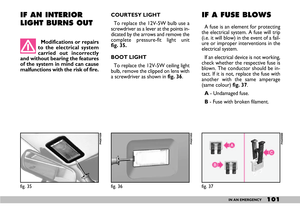 102
102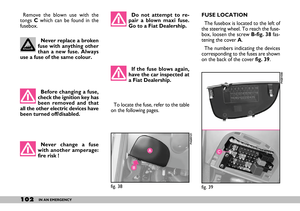 103
103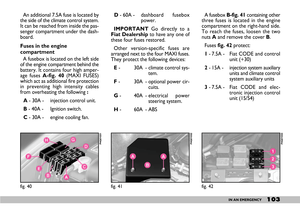 104
104 105
105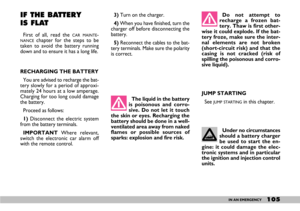 106
106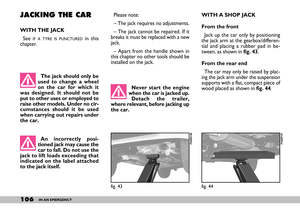 107
107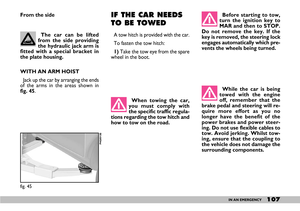 108
108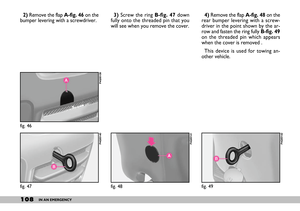 109
109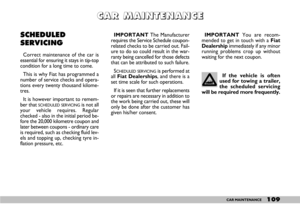 110
110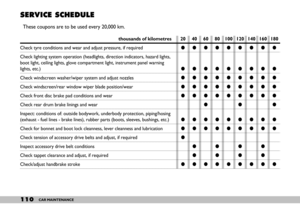 111
111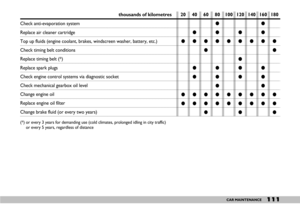 112
112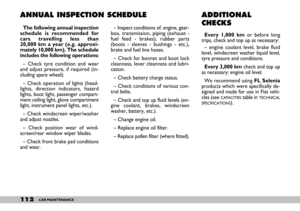 113
113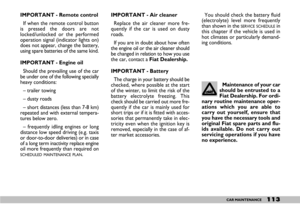 114
114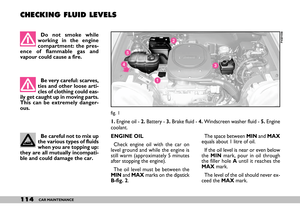 115
115 116
116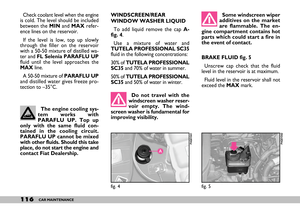 117
117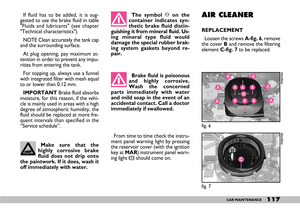 118
118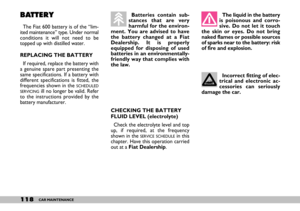 119
119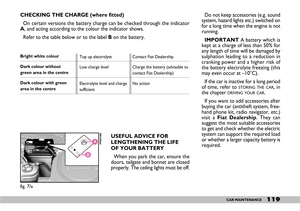 120
120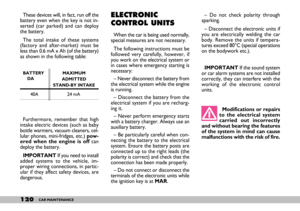 121
121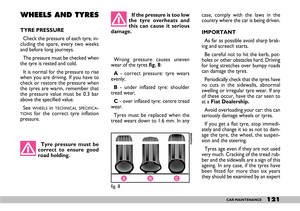 122
122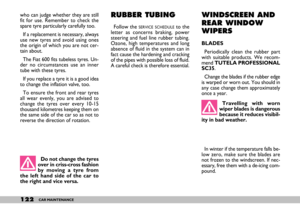 123
123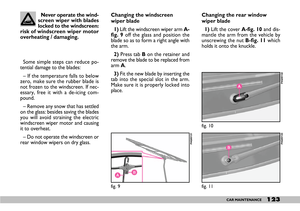 124
124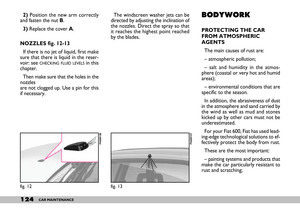 125
125 126
126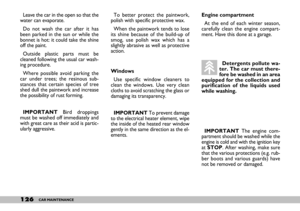 127
127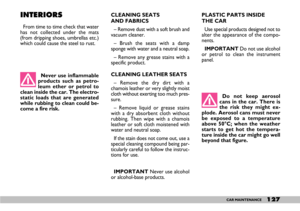 128
128 129
129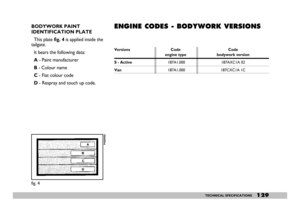 130
130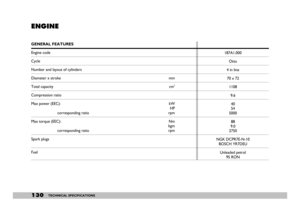 131
131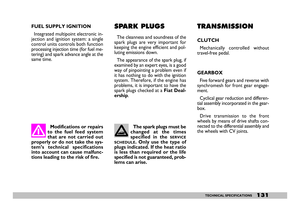 132
132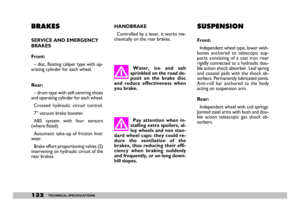 133
133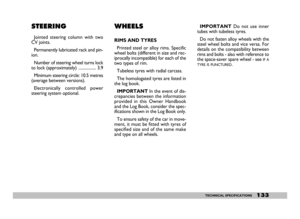 134
134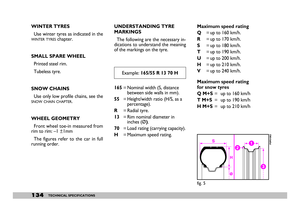 135
135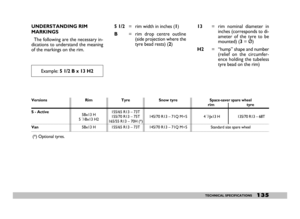 136
136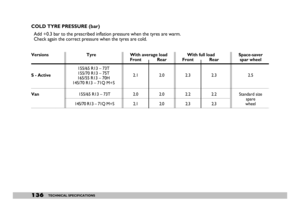 137
137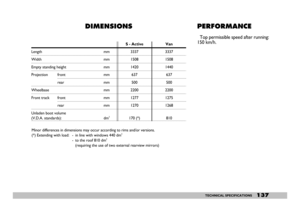 138
138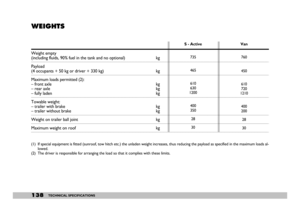 139
139 140
140 141
141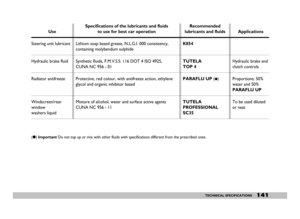 142
142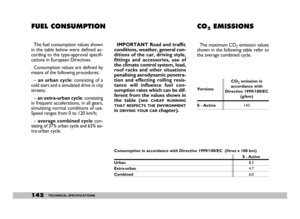 143
143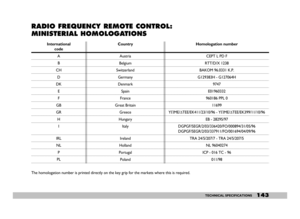 144
144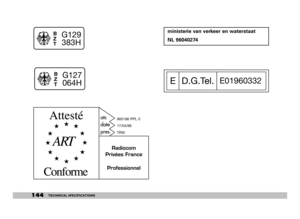 145
145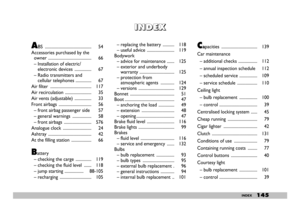 146
146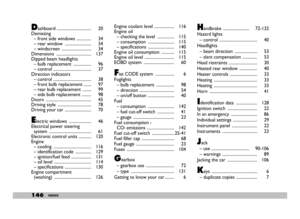 147
147 148
148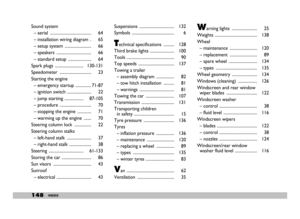 149
149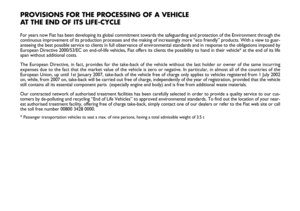 150
150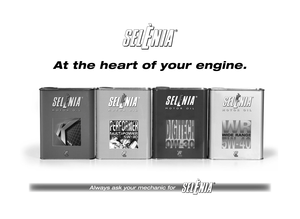 151
151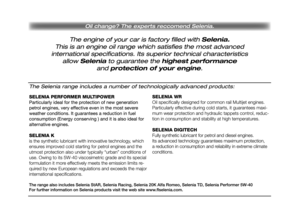 152
152 153
153






